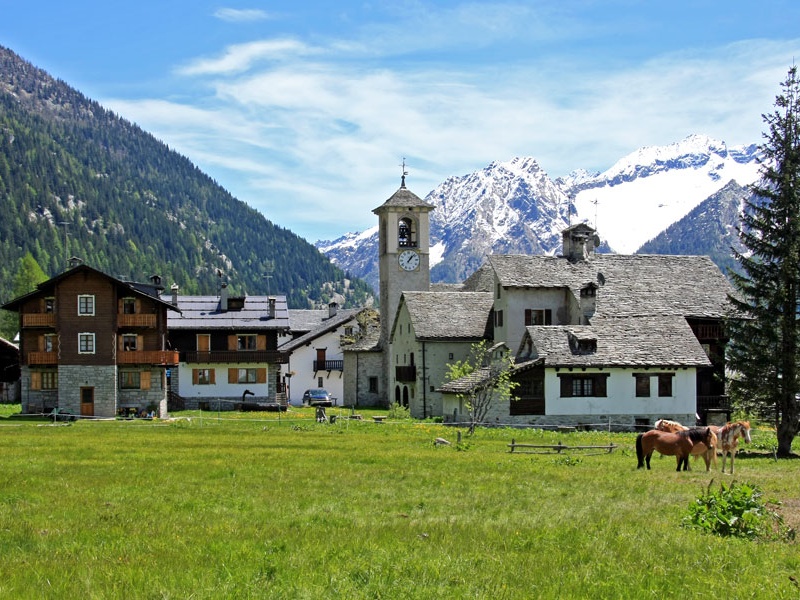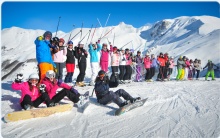Ski schools Macugnaga

Macugnaga (Walser German: Z'Makana) is a mountain village at 1,327 metres (4,354 ft) altitude, in the province of Verbano-Cusio-Ossola, in the north of the Piedmont region of Italy.It is located at the base of Dufourspitze (4,638 metres (15,217 ft), the second-tallest peak in Europe, in the Monte Rosa Massif, along Anzasca valley, one of the seven valleys around the mount.The town is surrounded by high and wild peaks like P. Gnifetti 4,559 m (14,957 ft), P.Zumstein 4563 m (14965 ft), P.Dufour 4638 m (15211 ft), P.Nordend 4612 m (15126 ft), Jagerhorn 3970 m (13020 ft), Cima Jazzi 3804 m (12476 ft), Neue Weisstor 3642 m (11945 ft), Cima di Roffel 3636 m (11925 ft). In particular, the town is famous for being in front of the East Face of Monte Rosa Massif, the tallest wall in the Alps. This wall, 2,600 metres (8,500 ft) high and 4 km wide, is a true monument in the history of mountaineering and it is nicknamed "The Himalayan Face of the Alps". Many famous climbers, like Alessandro Gogna, Kurt Diemberger, Hermann Buhl, and Patrick Gabarrou, traced important itineraries along the very dangerous and steep cliffs of the wall. Many others died trying to reach the four summits at the top of the wall: Damiano Marinelli and his three companions were swept away by a huge avalanche in 1881. Casimiro Bich, Cristiano Sommaruga, Ettore Zapparoli, Gildo Burgener and others famous and skillful climbers lose their lives all killed by huge avalanches. Ettore Zapparoli in particular, a musician, poet, writer, died alone in 1951, trying to win the most dangerous part of the wall, the sector under the P. Zumstein. His body was found in 2008 and buried in the mountaineering cemetery. This place, very close to the Chiesa Vecchia (the "Old Church", built in the 13th century), is a moving place, where a section remembers all the climbers dead on the wall. Many monuments are present in the town: the Chiesa Vecchia and its linden also of the 13th century, the Chiesa Nuova built in 1707, the 17th century Casa Pala. In the town there is a museum of mountaineering and in the hamlet of Borca the Walser Museum, devoted to the local German population who colonised the valley during the Middle Ages.The population of the area originated from the Walser, Germanic people coming from the Swiss canton Wallis.The area gives many opportunities for skiing in winter (a cableway brings from the central square of the town to the 3000 m (9800 ft) of the Passo del Monte Moro on the border with Switzerland, and hiking and mountaineering in summer. There are a swimming pool, a tennis centre, and a football field for sport activities. Despite its proximity to the international Milan Malpensa Airport (100 km, 62 miles), this town remains very quiet, wild and impressive for its spectacular landscape.[citation needed]The village is also known for its mine (Miniera della Guia).Between 2010 and January 2011, the Italian film-maker Cristina Comencini chose Macugnaga for making her film called Quando la notte (in English, When the Night) about a woman from a big city who falls in love with a local climber. She chose the place for its impressive position, in her words perfect for a movie. Some years ago the Italian soap Cento Vetrine recorded some episodes in Macugnaga.[citation needed] (source: Wikipedia)

